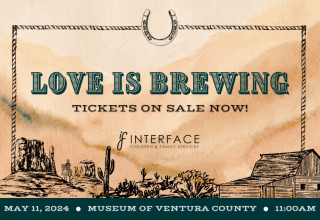
Valentine’s Day has never been my favorite holiday. I often think that a good conversation during a spontaneous midweek lunch with my wife is more meaningful than a preassigned holiday. Sure, we exchange cards and the occasional chocolate box, but we know that after 34 years together, our relationship is as full of love, trust, and safety on February 14 as it is on January 14, April 14, or August 14. Not everyone enjoys that confidence, though.
Young lovers in the teen bracket, tend to see big gestures as necessary for establishing romance. And they certainly can be fun. I’m always impressed with some of the “promposals” that circulate online: teens exercising enormous creativity in asking someone to a dance. For some teens, though, grandiose and public displays are also ways of branding their partner as “theirs,” sometimes expressing of high levels of jealousy and control.
February—the month of chocolate, roses, and saccharine romance–is also the national Teen Dating Violence Awareness and Prevention Month. An estimated 1 in 10 teens will experience physical violence within their dating relationship, and youth ages 12 to 19 experience the highest rates of rape and sexual assault (youth.gov). Girls are particularly vulnerable and experience significant negative outcomes from violent experiences, including eating disorders, drug use, and suicide attempts. Both girls and boys experiencing or enacting violence are also likely to carry those behaviors into their future relationships, becoming the adult victims and perpetrators of adult intimate partner violence. Because of those later consequences, our focus at Interface is prevention: stopping the risk before it becomes a crisis.
Our incredible team in our Family Violence Intervention and Prevention program helps young students to recognize the risks and signs of relational violence before it becomes a problem. This year in the pandemic, they have partnered with teachers across Ventura County’s school districts to ask students this core question: “What does a healthy relationship look like to you?” Students respond with words and images, like this one, and expand their concepts through discussion with our educators and one another.
Our team meets students where they are, interacting in their Zoom classrooms, finding remarkable engagement in a time when many teens have mostly checked out of the virtual classroom. A few of the core concepts that they learn include how to recognize the cycle of abuse, red-flags like excessive jealousy and other early warning signs, and how to approach a friend who might be struggling in a violent relationship. They also learn about the relationship between dating violence and human trafficking, as teens who are trafficked are also often the victims of relational violence. Our county’s youth have been very interested in this connection and some report seeing warning signs of violence among their friends, and even trafficking in their communities. To promote ongoing engagement with youth, our team has started an Instagram account (@interface_tdvprevention) where teens can further their learning about these essential issues and to find direction to key resources like our youth crisis line, 211, and loveisrespect.org.
As our county’s teens interact, many share about their fears of violence at home, of observing controlling and abusive patterns in their friendships as well as their romantic relationships, and also tell our team that they now know how to end toxic relationships safely. Many receive one-on-one peer counseling and support as they share their fears and learn how to exit unhealthy dating relationships or friendships.
I am so proud of this work and of our prevention team. They are going straight to the source of problems that tend to snowball when left unattended, and they are meeting with students to help them begin a new journey toward healthy relationships. Thank you for your excellent work, team!







